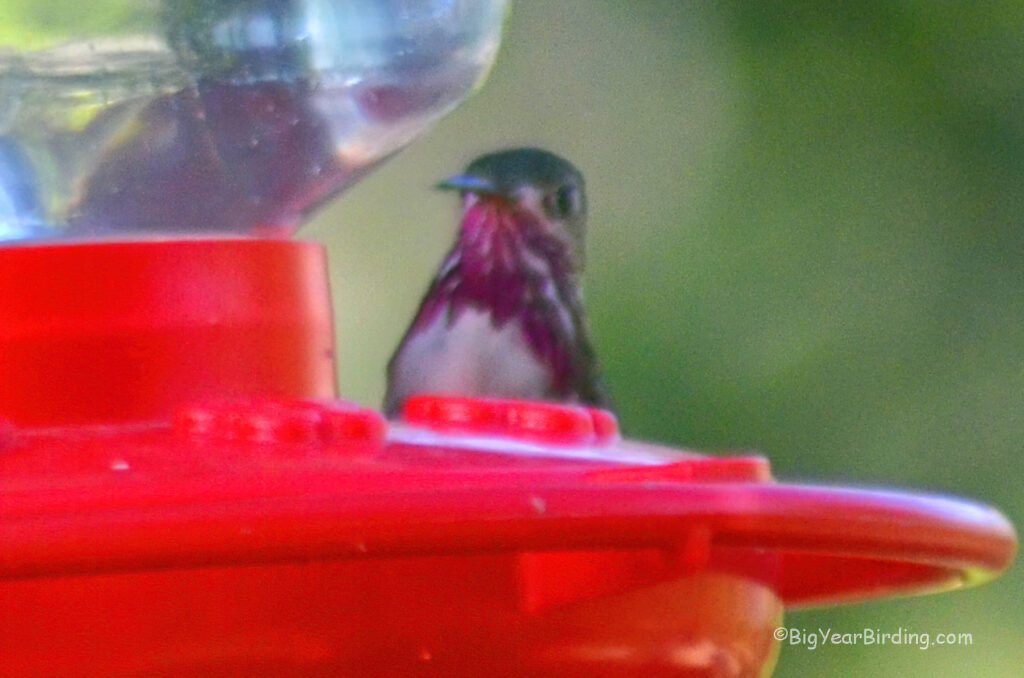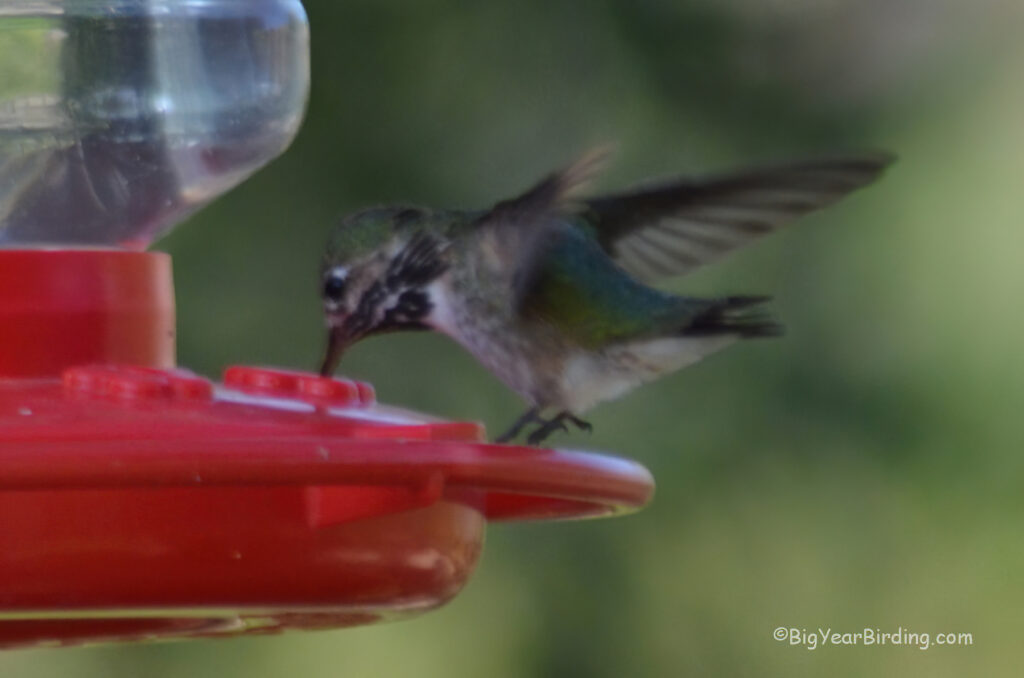
The Calliope Hummingbird (Stellula calliope) is the smallest bird species in North America. These tiny birds measure approximately 3.5 inches in length and weigh just 0.09 ounces, making them the smallest long-distance migratory bird in the world. Despite their diminutive size, Calliope Hummingbirds are known for their feisty nature and are known to chase off much larger hummingbird species from their territory.
Calliope Hummingbirds have several distinguishing field marks that make them easy to identify. The males have iridescent green feathers on their back and crown, while their throat is marked with a bright pinkish-red stripe. Females, on the other hand, have a duller green back and crown and a whitish throat with a few reddish spots. Both males and females have white markings on their tail feathers, which can be seen in flight.

These tiny birds undertake one of the longest migrations of any hummingbird species, traveling up to 4,000 miles each year between their breeding grounds in the western United States and their wintering grounds in Mexico and Central America. Calliope Hummingbirds typically breed in mountain meadows and coniferous forests at elevations between 5,000 and 10,000 feet, and they can be found as far north as Alaska and as far south as Baja California.
During the breeding season, Calliope Hummingbirds primarily feed on nectar from flowers such as penstemon, fireweed, and Indian paintbrush. They also consume small insects and spiders to supplement their diet. During migration, they rely on flower nectar and insects for fuel to sustain their long journey.
Conservation efforts have been put in place to protect Calliope Hummingbirds, which are listed as a species of “Least Concern” by the International Union for Conservation of Nature (IUCN). However, threats to their habitat, including deforestation and climate change, could impact their future populations. It is important to continue monitoring and conserving this tiny but remarkable bird species.
